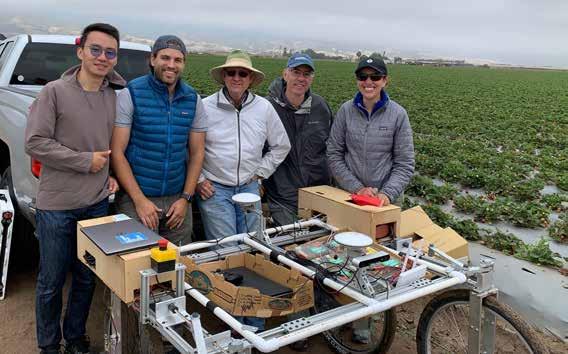MOHAMED By Noah Pflueger-Peters
As he approaches his 35th year on campus, mechanical and aerospace engineering professor Mohamed Hafez continues to leave an indelible mark on the department and his students. He has taught and mentored undergraduate, graduate and high school students and postdoctoral scholars alike while introducing several courses and being a driving force behind aerospace engineering at UC Davis. Hafez is a firm believer that you get out what you put in. He meticulously plans lessons for his classes and expects a high level of commitment from his students in return. Though his classes are difficult, he regularly receives emails from former students thanking him for the impact he had on their careers. “Teaching is a responsibility and as the instructor, you are in charge,” he said, “But success depends on both the instructor and the students. Both must be genuinely interested in education and you must devote time and put in sincere effort to get good results. It’s a good job, but very demanding if you want to do it right.” He has the same philosophy with research. Though he maintains a small research group, he dedicates himself to the students he does have. He spends hours with each student every week, working in-depth both on his own and with them on the problem they’re trying to solve to give them the best guidance possible. “Teaching enthusiastic students is a renewal for me,” he said. “I meet these new students and I get excited and they give me hope. They remind me of my youth and when I started my education.”
A CAREER IN AERODYNAMICS Hafez was inspired by the space race in the late ‘50s and became curious about how and why airplanes fly. This led him to aerospace engineering as an undergraduate at the University of Cairo, Egypt, where he was introduced to fluid dynamics and aerodynamics. He has worked in this area since and his research has focused on high-speed aircraft. He has coauthored 200 publications and two books, co-edited 11 more books and has had work funded by both NASA and Boeing. He has been an American Institute of Aeronautics and Astronautics (AIAA) fellow since 1994. He has also seen the aerospace engineering program at UC Davis grow from a small group to fully-fledged program while graduating 18 Ph.D. and 18 M.S. students. “They [Hafez and professor emeritus Jean-Jacques Chattot] are internationally well known, computational fluid dynamists who’ve seen [the field] from its beginnings to the revolution and transition from analytical solutions to computing,” said French Academy of Sciences member Olivier Pironneau in a review of their book, Theoretical and Applied Aerodynamics. “Their contribution has been essential to aerodynamics for airplanes, and more recently, turbines and windmills. Consequently, the book is a masterpiece for aerodynamics of analytical and numerical techniques.”
PAYING IT FORWARD Hafez earned a M.S. and Ph.D. in aerospace engineering and a M.S. in mathematics at the University of Southern California. He was fortunate enough to be able to learn from international experts of the time in hypersonic and transonic flows, such as his advisor, H.K. Chang. He also feels incredibly grateful for the mentorship he received at USC from Professors Laufer, Antosiewicz and Bellman and 20 U C D AV I S C O L L E G E O F E N G I N E E R I N G











